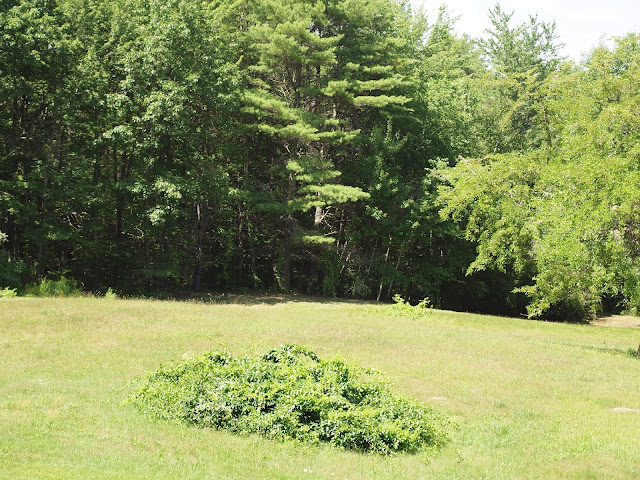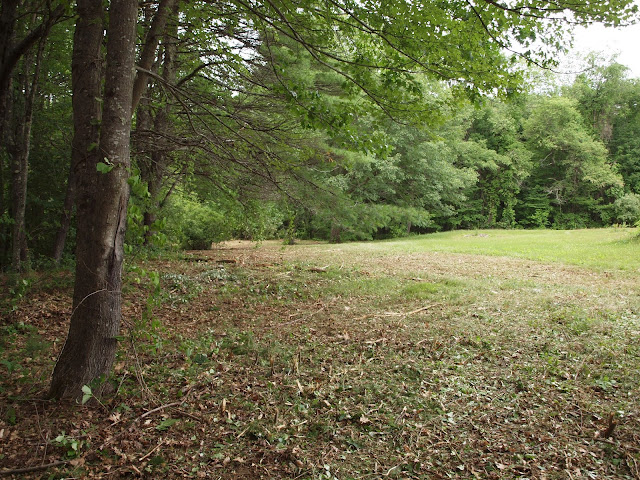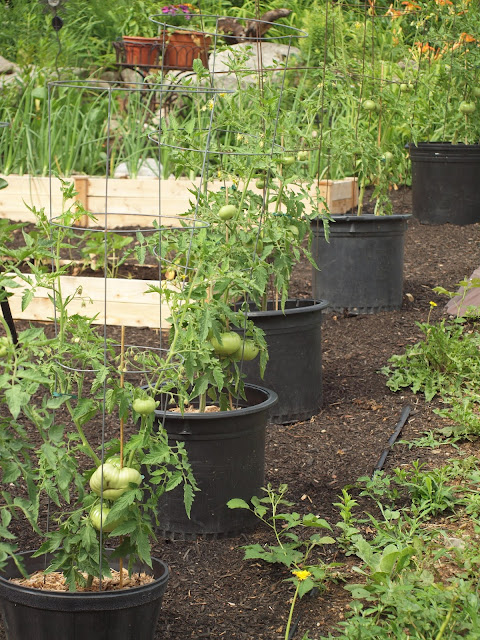I've wanted for years to build a proper track system for the mules. No, not a race track. Track systems toss the notion of large, open pastures or small, square paddocks out the window in favor of long, meandering alleys that promote movement and provide enrichment. The idea comes from something known as
Paddock Paradise, and is supposed to be a real game changer for equines like Flea, who can't be let out to graze.
Flea suffers from
PPID, which in the past was known as Equine Cushing's Disease. He also suffers from
Insulin Resistance, which causes debilitating pain in his feet when uncontrolled, and can cause the hooves to literally fall apart. The PPID is mostly controlled with medication, the IR is controlled through low starch/low sugar diet, proper hoof trimming, exercise, and medication, and grazing is a big no-no until things are under control. Some equines never return to grazing, some can graze in short, regulated blocks, and some can only graze using a muzzle that prevents them from ingesting too much grass at one time. For the past two and half years Flea's condition has been a roller coaster ride of 'doing so well' to 'he can barely walk'. Since we moved from the old house, the mules have been confined to small dry lots; paddocks with zero grass. The areas are big enough that they can move around, and Fargo can get a pretty good tight gallop going, but they can't really stretch out and move.
My hope is to start the new track at the existing paddock and build it around the edge of the pasture. I'm counting on this giving them the incentive to move more instead of hide in the barn all day. It's been hot, and I purposely situated the barn to make the most of the winter sun. Unfortunately that means the summer sun is relentless and there's little to no shade in their paddock. I have two fans constantly going inside the barn to provide them with a bit of a breeze, and the bug curtains across the run-in door keep the horseflies at bay, so they spend a lot of time inside. The track will meander down through some large trees, and that will provide shade outside the barn. I'll leave hay nets at different stations to encourage them to travel for their food, and as I'm able I'll add different patches of footing to help naturally wear their hooves.
The first step to this project is to decide where to put the track. In my case, the edges of the pasture, which had become horribly overgrown. Since I'll need to get rid of any tempting greens, mowing the brush and then turning the dirt over makes the most sense, versus tearing up valuable established pasture. I hope that some day Flea can go out on pasture again, so the plan is to retain the grazing area in the center and allow the mules to graze small portions of it. This is known as strip grazing, and helps to prevent overgrazing. I was able to hire a local property maintenance contractor to bush hog the pasture edges. He arrived yesterday, and in three and a half hours the pasture was transformed. The lighter areas in the photos are the newly mowed areas.
I swear just cutting that mess added an acre to the pasture!
As an added bonus, I had him mow the small area on the other side of the house that used to be a tiny paddock. My mother is hoping to utilize this area once she gets it cleaned up. I can't remember the last time this part of the property was actually opened up! You can see how overgrown it was; that's an old fence post in the center of the photo that was completely hidden from view before mowing.
The next step is to use the york rake to tear up the ground in the area for the track to get rid of any plants or grass. I'll start with my little rake, but the contractor will be back soon with his larger, more powerful rake to do the brunt of the work. I'm very excited to start this project, and hope I can get a small section of track in use before too long.












































